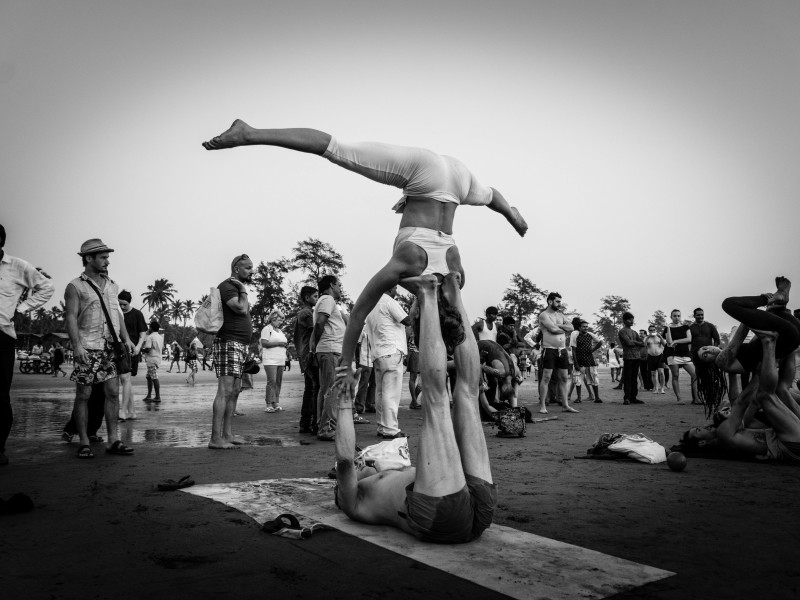Photo by Neil Krug
We all know that yoga does wonders for the mind. Even novices of asana, pranayama, and meditation report feeling increased mental stability and clarity during and after practice. Now, thanks to sophisticated brain imaging technologies, neuroscience is proving what teachers and practitioners have known for ages—that yoga and meditation can literally change your brain. But what exactly is going on up there? Take a peek inside—a basic understanding of brain anatomy and function can serve as a handy road map for your inner journey.
The frontal lobe is the hub of higher cognitive functions—including planning, discriminating, abstract thinking, personality, and behavior. The Bihar School refers to the breathing practice of kapalabhati as “frontal brain purification,” due to the rejuvenating effects it has on this area of the brain.
Known as the seat of conscious functioning, the cerebrum is the largest part of your brain. It’s divided into right and left hemispheres. On the physical level, the right hemisphere controls the left side of the body, and the left hemisphere controls the right. On the level of the subtle body, ida nadi (the lunar energy channel) is connected to the right half of the brain, and pingala nadi (the solar energy channel) is connected to the left side of the brain.
The anterior part of the frontal lobe, the prefrontal cortex, is the most evolved part of the brain and is responsible for positive capacities like concentration, happiness, creativity, and rational thinking. Studies using EEG have shown that meditation strengthens communication between the prefrontal cortex and other areas of the brain.
Roughly the size of a pea, the pituitary gland is the endocrine system’s master gland, producing and releasing hormones that control growth, metabolism, and the function of other hormones. On a more subtle level, the pituitary gland is related to the sixth, or ajna, chakra. Ajna literally means “command center.”
Neurotransmitters serve as the brain’s chemical messengers, relaying information between nerve cells. Neurological disorders are often the result of a neurotransmitter snafu—for instance, low levels of a neuro-transmitter known as GABA are linked to depression and anxiety. Recent studies show an association between regular asana practice and increased GABA levels.
The brain stem, which connects the brain and the spinal cord, plays a crucial role in digestion, heart rate, and diaphragmatic breathing. Neurons found in the brain stem send a nerve impulse to the diaphragm, which causes it to contract, thereby initiating inhalation.
The cerebellum controls balance, muscle coordination, reflexes, and movement. Asana would be impossible without it.
The limbic system is comprised of structures related to memory and emotion, such as the hippocampus, amygdala, thalamus, and hypothalamus. A 2010 study found that subjects who meditated 30 minutes a day for eight weeks had a reduction of gray matter in the amygdala—which is linked to fear and anxiety—and an increase of gray matter in the hippocampus, which plays a vital role in memory formation.
As the primary visual processing center of the brain, the occipital lobe helps you follow along visually in yoga class. And you can thank the temporal lobe for your ability to process verbal asana cues—it’s responsible for auditory perception.
The parietal lobe is associated with limb movement, understanding speech, and sensing pain. According to a study published in the Journal of Neuroscience in April 2011, brain scans of this region demonstrated that mindfulness meditation can dramatically reduce sensitivity to pain—even more so than morphine.
Written by Kat Heagberg on Yoga International











